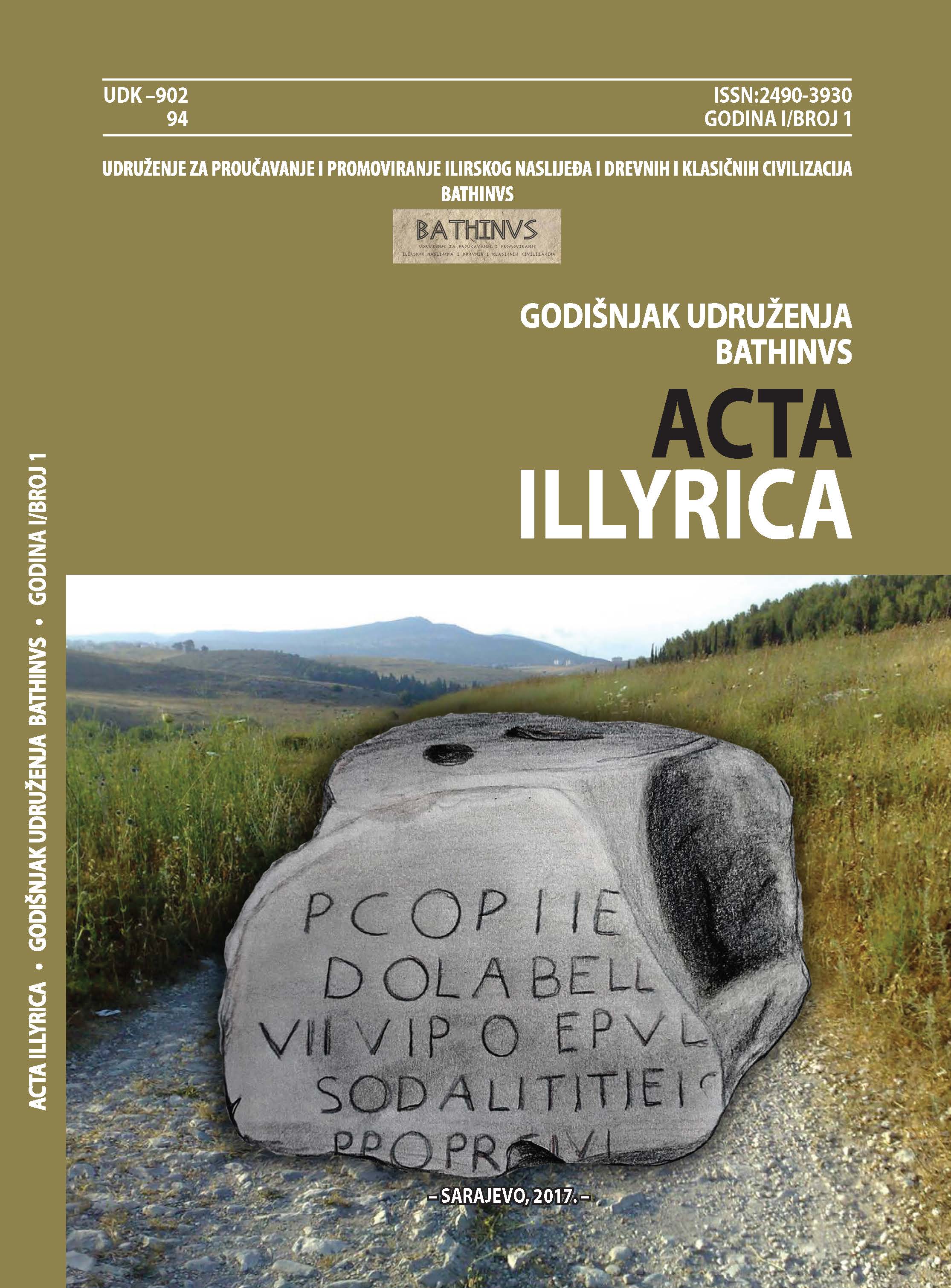Je li rimska Certisija bila caput viarum?
Was Roman Certissia a caput viarum?
Author(s): Branka MigottiSubject(s): Archaeology, Local History / Microhistory, Ancient World
Published by: Udruženje za proučavanje i promoviranje ilirskog naslijeđa i drevnih i klasičnih civilizacija “BATHINVS”
Keywords: Dolabella; roman roads; Pannonia; Certissia; caput viarum;
Summary/Abstract: There was a settlement on the south-Pannonian road Siscia – Cibalae (modern-day Sisak and Vinkovci) that was in the Roman travel documents from the 2nd –7th centuries (Claudii Ptolemaei Geographia, Itinerarium Antonini, Tabula Peutingeriana, Ravennatis anonymi Cosmographia) recorded under various names: Κέρτισσα, Cirtisa, Cirtisia, Certis, Certisia. On a fragmentary marble inscription from the 2nd half of the 4th - early 5th centuries, the form Certissia was inscribed. The find spot unfortunately remains unknown, but the closest candidate is the site of Štrbinci near Đakovo in NE Croatia. The inscription reads: [--- a]ccede ad Certissia[m ---]/[---] memor cupias [---]/[---] est caput v[iarum ---] ili v[iae? ---] / ----- A possible translation goes: … come to Certissia and, remembering, make a wish … here is a caput viarum or caput viae.A mention of the administrative status of Certissia, which would support an official caput viarum there (the point from which distances were measured) is missing from the written documents. On the other hand, the Antoine Itinerary supplies an invaluable piece of information, that namely, it was exactly in Certissia that a road branched off from the main route Emona – Sirmium (modern-day Ljubljana / Slovenia and Sremska Mitrovica / Serbia) towards Dalmatia and its capital Salonae (modern-day Solin on the eastern Adriatic coast). This means that Certissia was at least a crossroads, if not exactly a caput viarum. It was exactly on the basis of this fact that I ventured the restoration caput v(iarum) or caput v(iae) in my previous discussions of the abovementioned inscription. It was extensively discussed in an early Christian context (Migotti 2012). On the contrary, in this paper the stress is put on the nature of the inscription and the arguments in favour of the restoration caput viarum. This was provoked by the fact that, while the presumption of the public inscription, as well as the reading, restoration and interpretation of the Certissia inscription, were accepted in Croatian archaeology, they were rejected in some foreign scholarly circles, who decided that the inscription was in fact en epitaph, and the restoration caput viarum incorrect. However, the idea of an epitaph should be refused on a couple of grounds. The first one is the lack of convincing parallels even among early Christian epitaphs conveying itinerary data. Secondly, the Certissia inscription starts with the praise to the town, addressed to the passer-by, with no mention of the deceased in the first part of the inscription, while such mention should figure most oddly in the reminder of the text. Accordingly, the inscription should have been public, most probably related to a building of an unknown kind. Furthermore, at least two arguments corroborate the possibility of the restitution caput viarum, the first being the administrative status of Certissia. Although capita viarum were in most cases larger towns of some importance, this was not a sine qua non, as in Late Antiquity even smaller civitates, such as Certissia must have been, could have assumed such role. Another argument is the fact that one of the roads that led from Salonae towards the inner of the province of Dalmatia ended in Servitium (modern-day Gradiška, Bosnia and Herzegovina) on the right bank of the River Sava. It has been supposed that this road, before reaching the Sava, split in two directions: westwards to Servitium and eastwards to Urbate (unidentified place in Bosnia and Herzegovina, possibly Srbac). The latter place was the point at which the road from Certissia to the River Sava ended. Therefore, while Salonae was a caput viarum for the routes within the province of Dalmatia, Certissia could have performed such role for a Pannonian extension of one of Dolabella’s Dalmatian roads.
Journal: Godišnjak Udruženja BATHINVS “Acta Illyrica”
- Issue Year: I/2017
- Issue No: 1
- Page Range: 168 - 180
- Page Count: 13
- Language: Croatian

